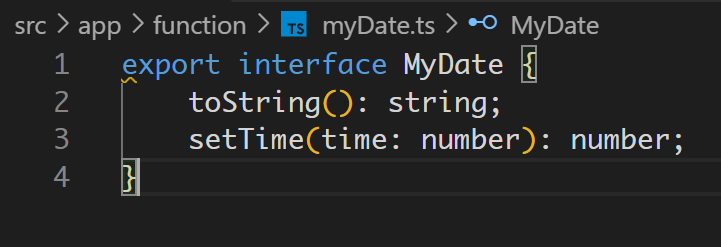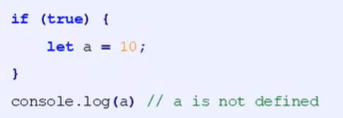ES6中通过class关键字,定义类
class Parent {
constructor(name,age){
this.name = name;
this.age = age;
}
speakSomething(){
console.log("I can speek chinese");
}
}经过babel转码之后
"use strict";
var _createClass = function () {
function defineProperties(target, props) {
for (var i = 0; i < props.length; i++) {
var descriptor = props[i];
descriptor.enumerable = descriptor.enumerable || false;
descriptor.configurable = true;
if ("value" in descriptor) descriptor.writable = true;
Object.defineProperty(target, descriptor.key, descriptor);
}
}
return function (Constructor, protoProps, staticProps) {
if (protoProps) defineProperties(Constructor.prototype, protoProps);
if (staticProps) defineProperties(Constructor, staticProps);
return Constructor;
};
}();
function _classCallCheck(instance, Constructor) {
if (!(instance instanceof Constructor)) {
throw new TypeError("Cannot call a class as a function");
}
}
var Parent = function () {
function Parent(name, age) {
_classCallCheck(this, Parent);
this.name = name;
this.age = age;
}
_createClass(Parent, [{
key: "speakSomething",
value: function speakSomething() {
console.log("I can speek chinese");
}
}]);
return Parent;
}();可以看到ES6类的底层还是通过构造函数去创建的。
通过ES6创建的类,是不允许你直接调用的。在ES5中,构造函数是可以直接运行的,比如Parent()。但是在ES6就不行。我们可以看到转码的构造函数中有_classCallCheck(this, Parent)语句,这句话是防止你通过构造函数直接运行的。你直接在ES6运行Parent(),这是不允许的,ES6中抛出Class constructor Parent cannot be invoked without 'new'错误。转码后的会抛出Cannot call a class as a function.我觉得这样的规范挺好的,能够规范化类的使用方式。
转码中_createClass方法,它调用Object.defineProperty方法去给新创建的Parent添加各种属性。defineProperties(Constructor.prototype, protoProps)是给原型添加属性。如果你有静态属性,会直接添加到构造函数上defineProperties(Constructor, staticProps)。但是貌似并没有用到,下面可以证明.
这两个流程走下来,其实就创建了一个类。
上面讲的是创建一个类的过程,那ES6如何实现继承的呢?还是上面的例子,这次我们给Parent添加静态属性,原型属性,内部属性
class Parent {
static height = 12
constructor(name,age){
this.name = name;
this.age = age;
}
speakSomething(){
console.log("I can speek chinese");
}
}
Parent.prototype.color = 'yellow'
//定义子类,继承父类
class Child extends Parent {
static width = 18
constructor(name,age){
super(name,age);
}
coding(){
console.log("I can code JS");
}
}
var c = new Child("job",30);
c.coding()转码之后的代码变成了这样
"use strict";
var _createClass = function () {
function defineProperties(target, props) {
for (var i = 0; i < props.length; i++) {
var descriptor = props[i];
descriptor.enumerable = descriptor.enumerable || false;
descriptor.configurable = true;
if ("value" in descriptor) descriptor.writable = true;
Object.defineProperty(target, descriptor.key, descriptor);
}
}
return function (Constructor, protoProps, staticProps) {
if (protoProps) defineProperties(Constructor.prototype, protoProps);
if (staticProps) defineProperties(Constructor, staticProps);
return Constructor;
};
}();
function _possibleConstructorReturn(self, call) {
if (!self) {
throw new ReferenceError("this hasn't been initialised - super() hasn't been called");
}
return call && (typeof call === "object" || typeof call === "function") ? call : self;
}
function _inherits(subClass, superClass) {
if (typeof superClass !== "function" && superClass !== null) {
throw new TypeError("Super expression must either be null or a function, not " + typeof superClass);
}
subClass.prototype = Object.create(superClass && superClass.prototype, {
constructor: {
value: subClass,
enumerable: false,
writable: true,
configurable: true
}
});
if (superClass) Object.setPrototypeOf ? Object.setPrototypeOf(subClass, superClass) : subClass.__proto__ = superClass;
}
function _classCallCheck(instance, Constructor) {
if (!(instance instanceof Constructor)) {
throw new TypeError("Cannot call a class as a function");
}
}
var Parent = function () {
function Parent(name, age) {
_classCallCheck(this, Parent);
this.name = name;
this.age = age;
}
_createClass(Parent, [{
key: "speakSomething",
value: function speakSomething() {
console.log("I can speek chinese");
}
}]);
return Parent;
}();
Parent.height = 12;
Parent.prototype.color = 'yellow';
//定义子类,继承父类
var Child = function (_Parent) {
_inherits(Child, _Parent);
function Child(name, age) {
_classCallCheck(this, Child);
return _possibleConstructorReturn(this, (Child.__proto__ || Object.getPrototypeOf(Child)).call(this, name, age));
}
_createClass(Child, [{
key: "coding",
value: function coding() {
console.log("I can code JS");
}
}]);
return Child;
}(Parent);
Child.width = 18;
var c = new Child("job", 30);
c.coding();
我们可以看到,构造类的方法都没变,只是添加了_inherits核心方法来实现继承,下面我们就看下这个方法做了什么?
首先是判断父类的类型,然后
subClass.prototype = Object.create(superClass && superClass.prototype, {
constructor: {
value: subClass,
enumerable: false,
writable: true,
configurable: true
}
});这段代码翻译下来就是
function F(){}
F.prototype = superClass.prototype
subClass.prototype = new F()
subClass.prototype.constructor = subClass接下来subClass.__proto__ = superClass_inherits核心思想就是下面两句
subClass.prototype.__proto__ = superClass.prototype
subClass.__proto__ = superClass一图胜千言
那为什么这样一倒腾,它就实现了继承了呢?
首先 subClass.prototype.__proto__ = superClass.prototype保证了c instanceof Parent是true,Child的实例可以访问到父类的属性,包括内部属性,以及原型属性。其次,subClass.__proto__ = superClass,保证了Child.height也能访问到,也就是静态方法。
subClass.__proto__ = superClass不是很好理解,可以通过下面的方式理解
function A(){}
var a = new A()
a.__proto__ = A.prototypea是一个实例,A.prototype是构造方法的原型。通过这种方式,那么a就可以访问A.prototype上面的方法。
那把 subClass类比成 a,superClass类比成A.prototype,那是不是subClass可以直接访问 superClass的静态属性,静态方法了。
原文地址:https://www.cnblogs.com/dreamaker/p/11909809.html
版权声明:本文内容由互联网用户自发贡献,该文观点与技术仅代表作者本人。本站仅提供信息存储空间服务,不拥有所有权,不承担相关法律责任。如发现本站有涉嫌侵权/违法违规的内容, 请发送邮件至 dio@foxmail.com 举报,一经查实,本站将立刻删除。






